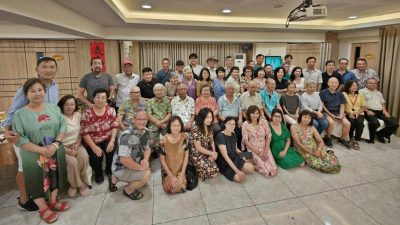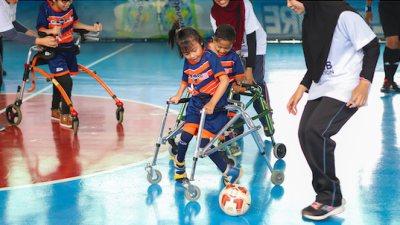By Shingo ITO
TOKYO (AFP) — When torrential rain flooded his scenic neighbourhood in western Japan, Kentaro Oishi had no hesitation: he jumped in the inflatable normally used for taking tourists white-water rafting and paddled off to rescue stranded locals.
The 50-year-old and his three fellow rafters, who usually take holidaymakers on a white-knuckle ride down the Kuma River, found themselves paddling through dirt waters that submerged their district after the river broke its banks.
"I got an emergency call from the city's disaster management office for help… as they thought we would be the first ones to get there," Oishi, who heads the rafting association in Hitoyoshi City, told AFP by telephone.
"I immediately told them, 'We'll get down there now.' And I prepared the boats. I did not hesitate at all," he said.
Several days of heavy rain over wide areas of Japan's southwestern Kyushu island have left dozens dead in flooding or landslides and turned low-lying areas like Hitoyoshi into a ghost town overnight.
At least 17 people have reportedly lost their lives in the hot-springs resort and persistent torrential rain has made access difficult for the emergency services.
Oishi himself was one of the lucky ones — his home and boat-storage facilities are on higher ground in the riverside city but he described his shock at seeing his home town underwater.
"I have 20 years of rafting experience, but I never dreamed" of rowing the boat through the city, the veteran paddler told AFP.
"To tell you the truth, I was so scared at first when I saw water levels rising so rapidly in the river," he said.

'Return to the river'
During rescue operations, the four rafters often had to disembark and walk the raft carefully against the onrushing muddy water to avoid capsizing and tipping terrified residents aboard.
"It was so tough as we did not know what was below the dirt stream," Oishi said.
But they managed to rescue some 40 residents, mainly elderly people including one person waiting for help after water rushed up to neck level.
"We usually help tourists from outside the city enjoy rafting, but this time we could help local people survive," he said.
"I'm grateful that local residents can now be aware what contribution rafting can make to the community," he said.
Following his one-day volunteer rescue operation, Oishi swapped his paddle for a shovel and has since been helping remove dirt from houses in his neighbourhood.
In normal times, Oishi would be enjoying one of the busiest periods of the high tourist season, with up to 100 people per day flocking to his river-rafting experience.
But with the flooding coming on top of the coronavirus pandemic that has crippled tourism, he has already decided to cut his losses for this year.
"I gave up on reopening this year as bridges were washed away and roads were cut off. But I still hope to return to the river possibly next year," the rafter told AFP.

ADVERTISEMENT
ADVERTISEMENT


































